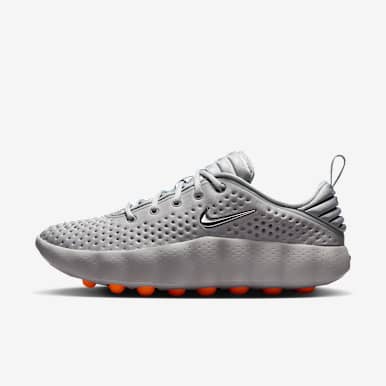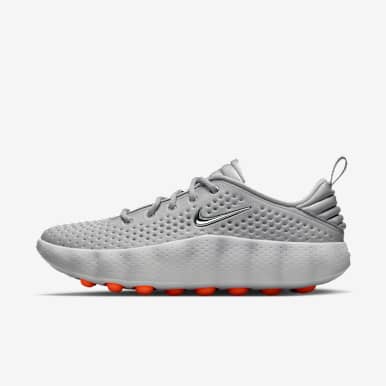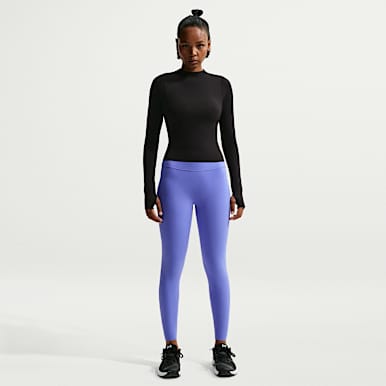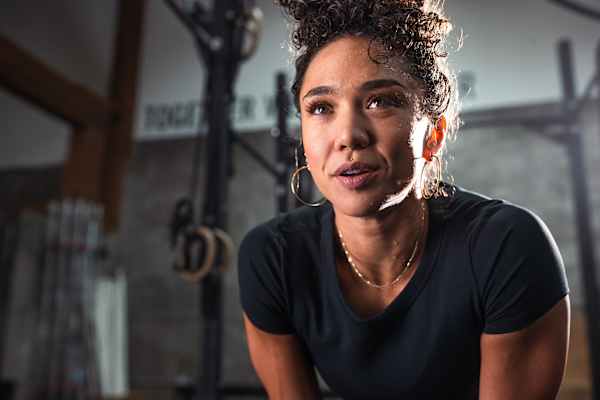How Long Does it Take to See Results from Working Out?
Activity
Whether your goal is to bulk up, get stronger, or lose fat, when to expect progress from working out depends on several factors.

The results you want to see or achieve through a workout routine can be much different from another person’s. That’s the beauty of fitness — you get to tailor your workout routine and nutrition plan to meet your specific goals. Just know that if you’re wondering how long it takes to see results from working out, there isn’t always a clear-cut answer, and that’s OK.
Ahead, two fitness professionals explain what you need to do to achieve three different fitness goals — plus, when you can expect to see results for each.
Fitness Goal: Gain Muscle Mass
“To gain muscle mass, you need a combination of strength training, proper nutrition, and recovery,” says Sarah Pelc Graca, NASM-CPT and certified nutrition and weight loss coach at Strong with Sarah. “Your strength training should focus on progressive overload, or gradually increasing weight, reps, or intensity over time.
Compound exercises — also known as multijoint exercises — such as squats, deadlifts, bench presses and pull-ups are the key movements you want to prioritize in your workouts, Pelc Graca explains. These movements are essential for building muscle mass, given that they recruit multiple muscle groups at once. You’ll also want to incorporate some isolated, single-joint exercises into your routine as well, such as bicep curls and tricep extensions. For hypertrophy (muscle growth), the goal is to perform more reps (eight to 12 reps) with moderate weights, Pelc Graca explains.
“Nutrition is just as important as exercise,” she says. “You’ll need to be in a slight calorie surplus while eating plenty of protein — about 0.7–1g per pound of body weight — to support muscle repair and growth.” You’ll also want to make sure you’re consuming adequate carbohydrates to fuel your workouts and healthy fats to support your hormone balance, she adds.
Of course, everyone’s body is different, so to really know how many calories your body specifically needs to put on muscle mass, you may want to consider doing a resting metabolic rate assessment, says Kelly McKenzie, a performance physiologist at Human Powered Health. “If you are under-fueling, you are not going to build muscle mass or gain strength,” she says.
Lastly, adequate recovery is essential to muscle growth. “Aim for at least seven to nine hours of quality sleep each night and manage stress levels because having excessive stress can interfere with muscle-building processes,” Pelc Graca says.
How long does it take to see results?
If you’re a beginner when it comes to lifting weights, you’ll likely see muscle mass gains pretty quickly. That’s because lifting offers a new stimulus to your muscles. As you lift, you’ll experience neuromuscular adaptations — meaning your body is recruiting more muscle fibers as you train — within the first four weeks, approximately, McKenzie says.
“However, if you have been training consistently, muscle mass gains can be harder to achieve,” McKenzie says. If you’re a seasoned athlete, it can be challenging to gain muscle mass, given your muscles have already adapted to a certain level of stress and demand. It’s not impossible — it just may take some extra time and effort. “If you have been training and you aren’t seeing muscle growth, it’s time to change your sets and reps,” McKenzie says. “If you are changing exercise selections and reps too frequently, keep your exercise selection and reps consistent for four to six weeks.”
Building visible muscle generally takes time, specifically anywhere between eight and 15 weeks, the experts say. “Substantial muscle growth can take several months or even years, depending on your genetics, consistency and effort,” Pelc Graca says. “This is because muscle growth, or hypertrophy, happens when resistance training creates microscopic tears in muscle fibers. Your body repairs these tears by fusing the fibers together, making them thicker and stronger. However, this process happens more slowly than people want — muscles need proper nutrition and recovery to grow effectively.”
If your nutrition, training plan and recovery strategies are all on point, then you can expect to gain around 05.-2 pounds of muscle per month, Pelc Graca says.
Fitness Goal: Increase Your Strength
Gaining muscle mass and improving your strength aren’t always synonymous, meaning you can get stronger without necessarily seeing your muscles grow. However, there is some overlap. In fact, many people design their training programs to achieve both strength and muscle mass gains, Pelc Graca says.
“To specifically improve your strength and power, your rep ranges will be lower, loads will be heavier, and some of the movements will be performed with speed components,” McKenzie says. When your fitness goal is to get stronger, the intensity of your workouts and how you perform those workouts matters. Pelc Graca recommends doing three to six reps with heavier weights.
“Force plate testing is a great way to get information on how your muscles create force and how your muscles use that force to move,” McKenzie says. “This information allows you to make your strength training more efficient, improve your weak areas and optimize your training.”
How long does it take to see results?
Getting stronger often happens faster than gaining lean muscle, Pelc Graca says. You may see changes in how much you can lift within the first few weeks. “That’s because strength is largely influenced by your nervous system’s ability to activate and coordinate muscle fibers efficiently,” Pelc Graca says. “When you start strength training, your brain and muscles communicate better, leading to increased force production even before muscles begin to grow.”
Fitness Goal: Lose Weight
Weight loss can be tricky, as it depends on a multitude of factors, including your metabolism, training consistency and starting body composition, experts say. It also generally requires a balance between cardio and resistance training workouts.
“Knowing your
Building muscle through resistance training enables you to burn more calories when you’re at rest, which can also support weight management, Pelc Graca says.
How long does it take to see results?
“In general, if you continue to consistently strength train and add in two to three days of zone two cardio workouts, plus proper fueling, you can see healthy weight loss in four to six weeks,” McKenzie says.
But substantial weight loss (and fat loss) often takes much longer. Pelc Graca adds that a safe and sustainable rate of fat loss to aim for is roughly 0.5-2 pounds a week. “If your goal is to lose 5–10 percent of your total body weight, it could take anywhere from a couple of months to a year, depending on your approach,” she says. “Weight loss happens when you consistently burn more calories than you consume — called a calorie deficit — but it’s not always linear.” Factors like hormonal changes, water retention, and muscle gain can impact the number on the scale, she explains.
Consider tracking your progress with a body composition scale, taking measurements around your waist and arms, logging strength improvements, and noting how you feel energy-wise. All of this data can show you that progress is happening — even if the number on the scale hasn’t changed much.
Also, don’t panic if the number on the scale goes up, Pelc Graca says. “When you first start a workout routine, your body goes through an adaptation period. Strength training, for example, can cause temporary water retention as your muscles store more glycogen and water for recovery.” Even if you’ve lost fat, your scale reading could temporarily go up from fluid retention alone.
Words by Cheyenne Buckingham





























